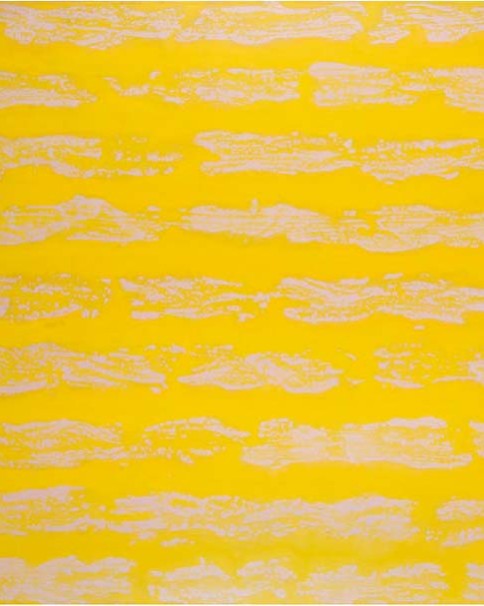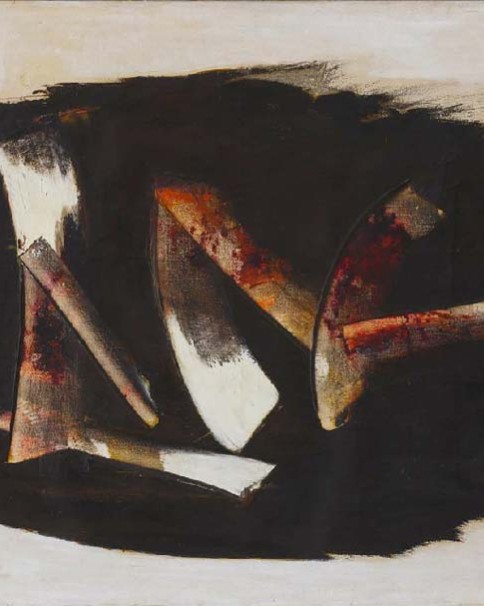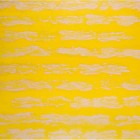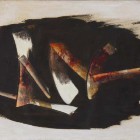1923 : Reigl attended the Hungarian University of Fine Arts from 1942 to 1945 where she was the student of the celebrated painter István Szőnyi. She was awarded a scholarship from the Academy of Hungary in Rome which allowed her to study in Italy between 1947 and 1948. During her studies there she encountered Byzantine icons, the mosaics of Ravenna, the works of Giotto and Masaccio and the paintings of Venice’s Giorgione and Titian amongst others.In 1950, when the Iron Curtain had divided Hungary and Western Europe, Reigl succeeded in crossing into Western Europe after eight previous attempts. She explained that her home country of Hungary solely commissioned her to paint portraits of ruling Communist leaders such as Stalin, Rákosi and Gerő, and so her defection to the West was necessary to preserve her artistic freedom. Reigl eventually reached Paris by crossing through Austria, Switzerland, Germany and Belgium where she lived from 1950 to 1963. In 1963 she moved to Marcoussis (Île-de-France). Reigl’s early works from her Surrealist period combine elements of photo collage with a mixture of figurative and more abstract elements (Incomparable Pleasure, 1952–53). She later expanded her use of collages from 1953 to 1955 using images from popular magazines and newspapers. Although these smaller photo collages weren’t included in her inaugural exhibition at André Breton’s galerie À l’Étoile scellée, they still align with the Surrealist movement through their bizarre juxtapositions, dreamlike scenarios and transfigured bodies. Most of her paintings in the show at galerie À l’Étoile scellée are more abstract, the exhibited canvases were Reigl’s first experimentation with automatic writing, a technique that recurs in various forms throughout her oeuvre. Reigl’s automatism arises from instinctive gestures of her body and showcases movement, levitation, tension and changes in processes, rhythms and roots of existence on spectacular large canvases. Figurative- and non-figurative representation is for her is a question of encoding and de-coding but may also be anthropomorphic. Reigl uses her body as her primary instrument when creating the series “Outburst” which she began in 1955. The Outbursts series is different from her earlier paintings with automatic writing in that they no longer use improvised metal tools to make spontaneous gestural marks. She began with throwing thick industrial pigment mixed with linseed oil onto the canvas with her hands and continued by vigorously scraping it from the center to the edges with a tool. In a 1956 Outburst in the collection of the Solomon R. Guggenheim Museum, the relatively spare composition is punctuated by thick impastos or forceful marks. The artist later explained this time in her life as a transitional period when she severed her ties with the Surrealists. The Outbursts are explosions of mass, radiating from a center as bursts of pure energy. For her following series “Mass Writing”, Reigl applied large volumes of thick, slow-drying black pigment to the canvas using a blade or a stick, and then painted with upward strokes. In these works, the black areas are dispersed outward toward the edges of the canvas. While working on these canvases, Reigl inadvertently began in 1958 working on an innovative oeuvre of paintings called Guanos, in which she reworked rejected canvases that had been covering the floor of her studio. The textured surface of these paintings evoke the archeological which is further affirmed by the artist herself when she refers to the canvases becoming “fertile ground” for new paintings.Some of her subsequent series include Man, Drap/décodage and Facing… They display Reigl’s desire for liberation from her own body by investigating the human figure. Other series such as “Writings after Music and Unfolding” are based around the central theme of music. In Writings after Music, she transcribes musical notes into concrete visual signs. Scholars characterize the creative process of Unfolding as a type of dance in which the artist develops a unique form of visual calligraphy by combining gesture and innovative painting techniques.
Reigl, Judit
PRESSE
April 30, 2016 / “Judit Reigl à l’honneur”, L’Objet d’art, mai 2016
April 7, 2016 / “Cinq fois Judit Reigl”, Télérama, 6 avril 2016





